
(The following is an excerpt from Tom Robbins’ “Jitterbug Perfume”, which happens to be my favorite book. With 2012 upon us, it’s time for humanity to decide whether or not we once and for all rid ourselves of our dangerous reptilian instincts in order to make way for the next stage in the evolution of consciousness. The other option is to keep doing what we’re doing now, which really doesn’t seem like an option anymore.)
********************************************
DANNYBOY’S THEORY
(WHERE WE ARE GOING AND WHY IT SMELLS THE WAY IT DOES)
To put it simply, humankind is about to enter the floral stage of its evolutionary development. On the mythological level, which is to say, on the psychic/symbolic level (no less real than the physical level), this event is signaled by the death of Pan.
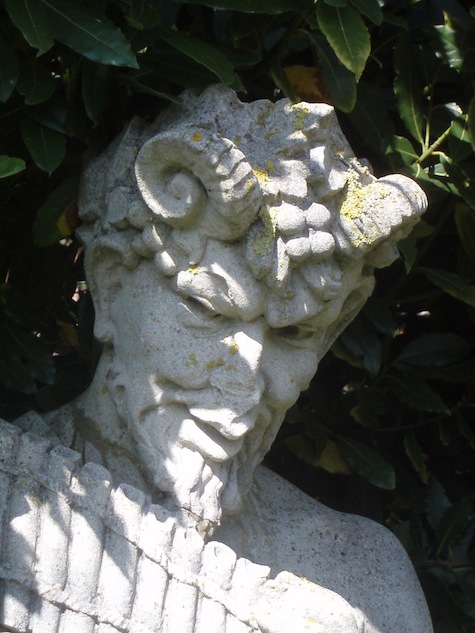
Pan, of course, represents animal consciousness. Pan embodies mammalian consciousness, although there are aspects of reptilian consciousness in his personality, as well. Reptilian consciousness did not disappear when our brains entered their mammalian stage. Mammalian consciousness was simply laid over the top of reptilian consciousness, and in many unenlightened, underevolved, underdeveloped, individuals the mammalian layer was thin and porous, and much reptile energy has continued to seep through.
When our remote ancestors crawled out of the sea, they no doubt had the minds of fish. Smarter, more adventurous and curious than their fellows who remained underwater, but fish-minded, nonetheless. On the long swampy road to a primate configuration, however, we developed a reptile mind. After all, in those tens of millions of years, reptile energy dominated the planet. It culminated in the dinosaurs.

As Marcel LeFever suggested in his address to the perfumers’ convention, reptile consciousness is cold, aggressive, selfpreserving, angry, greedy, and paranoid.
Paul McLean was the first neurophysicist to point out that we still carry a reptilian brain, functional and intact, around in our skulls today. The reptile brain is not an abstract concept, it is anatomically real. It has been carpeted over by the cerebrum, but it is there, deep within the forebrain, and consists of the limbic lobe, the hypothalamus, and, perhaps, other organs of the diencephalon. When we are in a colt sweat, a blind rage, or simply feeling smugly dispassionate, we may be sure that, for the moment, our reptile brain is in control of our consciousness.
As the Age of Reptiles was drawing to a close, the first flowers and mammals appeared. Marcel LeFever believes that the flowers actually eliminated the great reptiles. Mammals also may have contributed to their egress (not “exit”) because for many early mammals there was nothing quite like a couple of dinosaur eggs for breakfast.
At any rate, our ancestors had by then evolved brains that were both mammalian and floral in their formation. For reasons of its own, evolution allowed mammalian energy to hold sway, and the recently developed human midbrain or mesencephalon, which had folded over the old diencephalon, could be accurately labelled a mammal brain.

Characteristics of mammal consciousness are warmth, generosity, loyalty, love (romantic, platonic, and familial), joy, grief, humor, pride, competition, intellectual curiosity, and appreciation of art and music.
In late mammalian times, we evolved a third brain. This was the telencephalon, whose principal part was the neocortex, a dense rind of nerve fibers about an eighth of an inch thick that was simply molded over top of the existing mammal brain. Brain researchers are puzzled by the neocortex. What is its function? Why did it develop in the first place?
LeFever has postulated that the neocortex is an expanded memory bank, and it certainly possesses that capability. Robert Bly thinks that it is connected somehow to light. If the reptile brain equates with cold and the mammal brain with warmth, then the neocortex equates with light. BIy’s hunch makes a lot of sense because the third brain is a floral brain and flowers extract energy from light.

Even prior to the mysterious appearance of the neocortex, our brains had strong floral characteristics. The whole brain is described in science as a bulb. The neurons of which it is composed have dendrites: roots and branches. The cerebellum consists of a large mass of closely packed folia, which are bundles of nerve cells described in the literature as leaflike. Not only do the individual neurons closely resemble plants or flowers, the brain itself looks like a botanical specimen. It has a stem, and a crown that unfolds, in embryonic growth, much in the manner of a petaled rose.
In the telencephalon, the new brain, the floral similarity increases. Its nerve fibers divide indefinitely, like the branches of a tree. This process is called, appropriately, arborization. In the proliferation of those twiggy fibers, tiny deposits of neuromelanin are cast off like seeds. The neuromelanin seeds apparently are the major organizing molecules in the brain. They link up with glial cells to regulate the firing of nerve cells. When we think, when we originate creative ideas, a literal blossoming is taking place. A brain entertaining insights is physically similar, say, to a jasmine bush blooming. It’s smaller, and faster, that’s all.
 Moreover, neuromelanin absorbs light and has the capacity to convert light into other forms of energy. So Bly was correct. The neocortex is light-sensitive and can, itself, be lit up by higher forms of mental activity, such as meditation or chanting. The ancients were not being metaphoric when they referred to “illumination.”
Moreover, neuromelanin absorbs light and has the capacity to convert light into other forms of energy. So Bly was correct. The neocortex is light-sensitive and can, itself, be lit up by higher forms of mental activity, such as meditation or chanting. The ancients were not being metaphoric when they referred to “illumination.”
With the emergence of the neocortex, the floral properties of the brain, which had, for millions of years, been biding their time, waiting their turn, began to make their move, the gradual move toward a dominant floral consciousness.
When life was a constant struggle between predators, a minute-by-minute battle for survival, reptile consciousness was necessary. When there were seas to be sailed, wild continents to be explored, harsh territory to be settled, agriculture to be mastered, mine shafts to be sunk, civilization to be founded, mammal consciousness was necessary. In its social and familial aspects, it is still necessary, but no longer must it dominate.
The physical frontiers have been conquered. The Industrial Revolution has shot its steely wad. In our age of high technology, the rough and tough manifestations of mammalian sensibility are no longer a help but a hindrance. (And the vestiges of reptilian sensibility, with its emphasis on territory and defense, are dangerous to an insane degree.) We require a less physically aggressive, less rugged human being now. We need a more relaxed, contemplative, gentle, flexible kind of person, for only he or she can survive (and expedite) this very new system that is upon us. Only he or she can participate in the next evolutionary phase. It has definite spiritual overtones, this floral phase of consciousness.

The most intense spiritual experiences all seem to involve the suspension of time. It is the feeling of being outside of time, of being timeless, that is the source of ecstasy in meditation, chanting, hypnosis, and psychedelic drug experiences. Although it is briefer and less lucid, a timeless, egoless state (the ego exists in time, not space) is achieved in sexual orgasm, which is precisely why orgasm feels so good. Even drunks, in their crude, inadequate way, are searching for the timeless time. Alcoholism is an imperfect spiritual longing.
In a hundred different ways, we have mastered the art of space. We know a great deal about space. Yet we know pitifully little about time. It seems that only in the mystic state do we master it. The “smell brain”, the memory area of the brain activated by the olfactory nerve, and the “light brain, “the neocortex,” are the keys to the mystic state. With immediacy and intensity, smell activates memory, allowing our minds to travel freely in time. The most profound mystical states are ones in which normal mental activity seems suspended in light. In mystic illumination, as at the speed of light, time ceases to exist.
Flowers do not see, hear, taste, or touch, but they react to light in a crucial manner, and they direct their lives and their environment through an orchestration of aroma.
With an increased floral consciousness, humans will begin to make full use of their “light brain” and to make more refined and sophisticated use of their “smell brain.” The two are portentously linked. In fact, they overlap to such an extent that they may be considered inseparable.
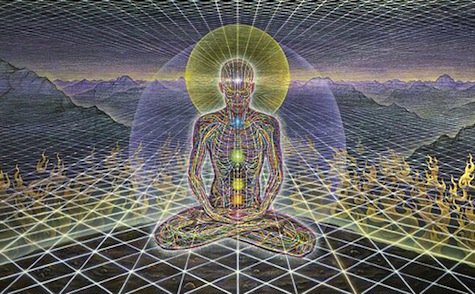
We live now in an information technology. Flowers have always lived in an information technology. Flowers gather information all day. At night, they process it. This is called photosynthesis.
As our neocortex comes into full use, we, too, will practice a kind of photosynthesis. As a matter of fact, we already do, but compared to the flowers, our kind is primitive and limited.
For one thing, information gathered from daily newspapers, soap operas, sales conferences, and coffee klatches is inferior to information gathered from sunlight. (Since all matter is condensed light, light is the source, the cause of life. Therefore, light is divine. The flowers have a direct line to God that an evangelist would kill for.)
Either because our data is insufficient or because our processing equipment is not fully on line, our own nocturnal processing is part-time work. The information our conscious minds receive during waking hours is processed by our unconscious during so-called “deep sleep.” We are in deep sleep only two or three hours a night. For the rest of our sleeping session, the unconscious mind is off duty. It gets bored. It craves recreation. So it plays with the material at hand. In a sense, it plays with itself. It scrambles memories, juggles images, rearranges data, invents scary or titillating stories. This is what we call “dreaming.” Some people believe that we process information during dreams. Quite the contrary. A dream is the mind having fun when there is no processing to keep it busy. In the future, when we become more efficient at gathering quality information and when floral consciousness becomes dominant, we will probably sleep longer hours and dream hardly at all.
Pan, traditionally, presides over dreams, especially the erotic dream and the nightmare. A decline in dreaming will be further evidence of Pan’s demise.
Returning to information efficiency, science has learned recently that trees communicate with each other. A tree attacked by insects, for example, will transmit that news to another tree a hundred yards away so that the second tree can commence manufacturing a chemical that will repel that particular variety of bug. Reports from the infested tree allow other trees to protect themselves. The information likely is broadcast in the form of aroma. This would mean that plants collect odors as well as emit them. The rose may be in an olfactory relationship with the lilac. Another possibility is that between the trees a kind of telepathy is involved. There is also the possibility that all of what we call mental telepathy is olfactory. We don’t read another’s thoughts, we smell them.
We know that schizophrenics can smell antagonism, distrust desire, etc., on the part of their doctors, visitors, or fellow patients, no matter how well it might be visually or vocally concealed. The human olfactory nerve may be small compared to a rabbit’s, but it’s our largest cranial receptor, nevertheless. Who can guess what “invisible” odors it might detect?
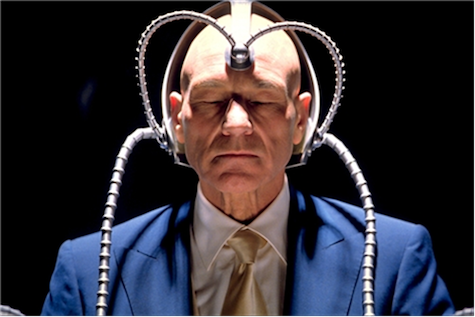
As floral consciousness matures, telepathy will no doubt become a common medium of communication.
With reptile consciousness, we had hostile confrontation.
With mammal consciousness, we had civilized debate.
With floral consciousness, well have empathetic telepathy.
A floral consciousness and a data-based, soft technology are ideally suited for one another. A floral consciousness and pacifist internationalism are ideally suited for one another. A floral consciousness and an easy, colorful sensuality are ideally suited for one another. (Flowers are more openly sexual than animals. The Tantric concept of converting sensual energy to spiritual energy is a floral ploy.) A floral consciousnes and an extraterrestrial exploration program are ideally suited for one another. (Earthlings are blown aloft in silver pods to seed distant planets.) A floral consciousness and an immortal society are ideally suited for one another. (Flowers have superior powers of renewal, and the longevity of trees is celebrated. The floral brain is the organ of eternity.)
Lest we fancy that we shall endlessly and effortlessly be as the flowers that bloom in the spring, tra-la, let us bear in mind that reptilian and mammalian energies are still verbal much with us. Externally and internally.

Obviously, there are powerful reptilian forces in the Pentagon and the Kremlin; and in the pulpits of churches, mosques and synagogues, where deathist dogmas of judgment, punishment, self-denial, martyrdom, and afterlife supremacy are preached. But there are also reptilian forces within each individual.
Myth is neither fiction nor history. Myths are acted out in our own psyches, and they are repetitive and ongoing.
Beowulf, Siegfried, and the other dragon slayers are aspects of our own unconscious minds. The significance of their heroics should be apparent. We dispatched them with their symbolic swords and lances to slay reptile consciousness. The reptile brain is the dragon within us.
When, in evolutionary process, it became time to subdue mammalian consciousness, a less violent tactic was called for. Instead of Beowulf with his sword and bow, we manifested Jesus Christ with his message and example. Jesus Christ, whose commandment “Love thy enemy” has proven to be too strong a floral medicine for reptilian types to swallow. Jesus Christ, who continues to point out to job-obsessed mammalians that the lilies of the field have never punched time clocks.)

At the birth of Christ, the cry resounded through the ancient world, “Great Pan is dead.” The animal mind was about to be subdued. Christ’s mission was to prepare the way for floral consciousness.
In the East, Buddha performs an identical function.
It should be emphasized that neither Christ nor Buddha harbored the slightest antipathy toward Pan. They were merely fulfilling their mytho-evolutionary roles.
Christ and Buddha came into our psyches not to deliver us from evil but to deliver us from mammal consciousness. The good versus evil plot has always been bogus. The drama unfolding in the universe-in our psyches-is not good against evil but new against old, or, more precisely, destined against obsolete.
Just as the grand old dragon of our reptilian past had to be pierced by the hero’s sword to make way for Pan and his randy minions, so Pan himself has had to be rendered weak and ineffectual has had to be shoved into the background of our ongoing psychic progression.
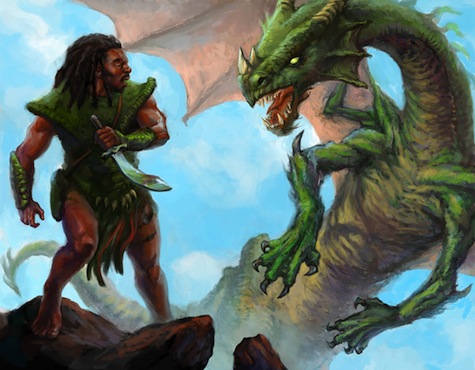
Because Pan is closer to our hearts and our genitals, we shall miss him more than we shall miss the dragon. We shall miss his pipes that drew us, trembling, into the dance of lust and confusion. We shall miss his pranksterish overturning of decorum; the way he caused the blood to heat, the cows to bawl, and the wine to flow. Most of all, perhaps, we shall miss the way he mocked us, with his leer and laughter, when we took our blaze of mammal intellect too seriously. But the old playfellow has to go. We’ve known for two thousand years that Pan must go. There is little place for Pan’s great stink amidst the perfumed illumination of the flowers.
Just recently, a chap turned up in New Orleans who may have been the prototype of the floral man. A Jamaican, they say, named Bingo Pajama, he sang songs, dealt in bouquets, laughed a lot, defied convention, and contributed to the production of a wonderful new scent. In some ways, he resembled Pan. Yet, Bingo Pajama smelled good. He smelled sweet. His floral brain was so active that it produced a sort of neocortical honey. It actually attracted bees.
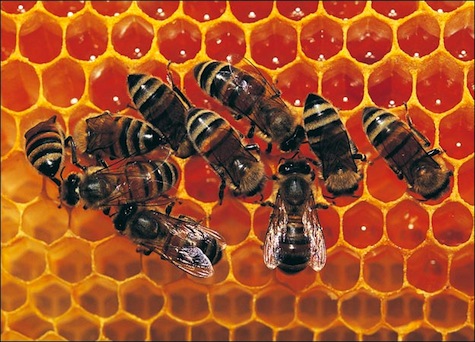
When Western artists wished to demonstrate that a person was holy, they painted a ring of light around the divine one’s head. Eastern artists painted a more diffused aura. The message was the same. The aura or the halo signified that the light was on in the subject’s brain. The neocortex was fully operative. There is, however, a second interpretation of the halo. It can be read as a symbolized, highly stylized swarm of bees.
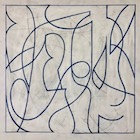

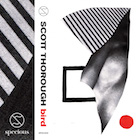







I read this in three sessions while doing some other things online. Very interesting perspective. I can agree with a lot of it and the rest at least makes me think. Nice one.